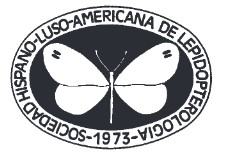Geometridae Stephens, 1829 from different altitudes in Western Himalayan Protected Areas of Uttarakhand, India (Lepidoptera: Geometridae)
DOI:
https://doi.org/10.57065/shilap.978Keywords:
Lepidoptera, Geometridae, diversity, altitude, Western Himalaya, indicator species, Uttarakhand, IndiaAbstract
The Geometridae Stephens, 1829 are considered as an excellent model group to study insect diversity patterns across elevational gradients globally. This paper documents 168 species of Geometridae belonging to 99 genera and 5 subfamilies from different Protected Areas in a Western Himalayan state, Uttarakhand in India. The list includes 36 species reported for the first time from Uttarakhand, which hitherto was poorly explored and reveals significant altitudinal range expansion for at least 15 species. We sampled different vegetation zones across an elevation gradient stretching from 600 m up to 3600 m, in Dehradun-Rajaji landscape, Nanda Devi National Park, Valley of Flowers National Park, Govind Wildlife Sanctuary, Gangotri National Park and Askot Wildlife Sanctuary. The subfamily Ennominae represented the maximum number of species, and the species of subfamily Larentiinae were found to be more restricted to higher elevation areas. Western Mixed Coniferous forest held the greatest number of species, whereas the Subalpine forest was characterized by the highest number of indicator species identified through Indicator Species Analysis. While Indo-Malayan species dominated the assemblage composition, the maximum number of Himalayan endemics suggested that these species are long adapted to the Himalayan climatic gradient and ongoing climate-mediated perturbation may hamper their future survival.
Downloads
Global Statistics ℹ️
|
1205
Views
|
1327
Downloads
|
|
2532
Total
|
|
References
ASHTON, L. A., ODELL, E. H., BURWELL, C. J., MAUNSELL, S. C., NAKAMURA, A., MCDONALD, W. J. F. & KITCHING, R. L., 2016.– Altitudinal patterns of moth diversity in tropical and subtropical Australian rainforests.– Austral Ecology, 41(2): 197-208. DOI: https://doi.org/10.1111/aec.12309
ASHTON, L. A., KITCHING, R. L., MAUNSELL, S., BITO, D. & PUTLAND, D., 2011.– Macrolepidopteran assemblages along an altitudinal gradient in subtropical rainforest exploring indicators of climate change.– Memoirs of the Queensland Museum, 55: 375-389.
AXMACHER, J., HOLTMANN, G., SCHEUERMANN, L., BREHM, G., MÜLLER-HOHENSTEIN, K. & FIEDLER, K., 2004.– Diversity of geometrid moths (Lepidoptera: Geometridae) along an Afrotropical elevational rainforest transect.– Diversity and Distributions, 10: 293-302. DOI: https://doi.org/10.1111/j.1366-9516.2004.00101.x
BARLOW, H. S., 1982.– An Introduction to the Moths of South East Asia: 305 pp. Malayan Nature Society, Kuala Lumpur.
BECK, J., BREHM, G. & FIEDLER, K., 2011.– Links between the environment, abundance and diversity of Andean moths.– Biotropica, 43: 208-217. DOI: https://doi.org/10.1111/j.1744-7429.2010.00689.x
BECK, J., SCHULZE, C. H., LINSENMAIR, K. E. & FIEDLER, K., 2002.– From forest to farmland: diversity of geometrid moths along two habitat gradients in Borneo.– Journal of Tropical Ecology, 17: 33-51. DOI: https://doi.org/10.1017/S026646740200202X
BENISTON, M., DIAZ, H. F. & BRADLEY, R. S., 1997.– Climate change at high elevation sites: an overview.– Climate Change, 36: 233-251. DOI: https://doi.org/10.1023/A:1005380714349
BREHM, G. & FIEDLER, K., 2003.– Faunal composition of geometrid moths changes with altitude in an Andean montane rain forest.– Journal of Biogeography, 30: 431-440. DOI: https://doi.org/10.1046/j.1365-2699.2003.00832.x
BREHM, G., COLWELL, R. K. & KLUGE, J., 2007.– The role of environment and mid-domain effect on moth species richness along a tropical elevational gradient.– Global Ecology and Biogeography, 16: 205-217. DOI: https://doi.org/10.1111/j.1466-8238.2006.00281.x
BREHM, G., STRUTZENBERGER, P. & FIEDLER, K., 2013.– Phylogenetic diversity of geometrid moths decreases with elevation in the tropical Andes.– Ecography, 36: 1247-1253. DOI: https://doi.org/10.1111/j.1600-0587.2013.00030.x
BREHM, G., SÜSSENBACH, D. & FIEDLER, K., 2003.– Unique elevational patterns of geometrid moths in an Andean montane rainforest.– Ecography, 26: 456-466. DOI: https://doi.org/10.1034/j.1600-0587.2003.03498.x
BURWELL, C. J. & NAKAMURA, A., 2011.– Distribution of ant species along an altitudinal transect in continuous rainforest in sub-tropical Queensland, Australia.– Memoirs of Queensland Museum, 55: 391-411.
CHAMPION, H. G. & SETH, S. K., 1968.– A revised survey of forest types of India: 404 pp. Government of India Press, New Delhi.
CHAWLA, A., RAJKUMAR, S., SINGH, K. N., LAL B. & THUKRAL, A. K., 2008.– Plant species diversity along an altitudinal gradient of Bhabha Valley in Western Himalaya.– Journal of Mountain Science, 5: 157–177. DOI: https://doi.org/10.1007/s11629-008-0079-y
CHEN, I. C., SHIU, H. J., BENEDICK, S., HOLLOWAY, J. D., CHEY, V. K., BARLOW, H. S., HILL, J. K. & THOMAS, C. D., 2009.– Elevation increases in moth assemblages over 42 years on a tropical mountain.– Proceedings of the National Academy of Sciences, 106(5): 1479-1483. DOI: https://doi.org/10.1073/pnas.0809320106
CHEY, V. K., HOLLOWAY, J. D. & SPEIGHT, M. R., 1997.– Diversity of moths in forest plantations and natural forests in Sabah.– Bulletin of Entomological Research, 87: 371-385. DOI: https://doi.org/10.1017/S000748530003738X
COLWELL, R. K. & CODDINGTON, J. A., 1994.– Estimating terrestrial biodiversity through extrapolation.– Philosophical transactions of the Royal Society London, 345: 101-118. DOI: https://doi.org/10.1098/rstb.1994.0091
DUFRENE, M. & LEGENDRE, P., 1997.– Species assemblages and indicator species: the need for a flexible asymmetrical approach.– Ecological Monographs, 67: 345-366. DOI: https://doi.org/10.1890/0012-9615(1997)067[0345:SAAIST]2.0.CO;2
FOSTER, P., 2001.– The potential negative impacts of global climate change on tropical montane cloud forests.– Earth-Science Reviews, 55: 73-106. DOI: https://doi.org/10.1016/S0012-8252(01)00056-3
GRAHAM, C. H., PARRA, J. L., RAHBEK, C. & MCGUIRE, J. A., 2009.– Phylogenetic structure in tropical hummingbird communities.– Proceedings of the National Academy of Science, 106: 19673-19678. DOI: https://doi.org/10.1073/pnas.0901649106
HAMPSON, G. F., 1892.– Fauna of British India including Ceylon and Burma-Moths, 1: 527 pp. Taylor & Francis, London.
HAMPSON, G. F., 1894.– Fauna of British India including Ceylon and Burma-Moths, 2: 609 pp. Taylor & Francis, London.
HAMPSON, G. F., 1895.– Fauna of British India including Ceylon and Burma-Moths, 3: 546 pp. Taylor & Francis, London.
HAMPSON, G. F., 1896.– Fauna of British India including Ceylon and Burma-Moths, 4: 594 pp. Taylor & Francis, London.
HILT, N., BREHM, G. & FIEDLER, K., 2006.– Diversity and ensemble composition of geometrid moths along a successional gradient in the Ecuadorian Andes.– Journal of Tropical Ecology, 22: 155-166. DOI: https://doi.org/10.1017/S0266467405003056
HODKINSON, I. D., 2005.– Terrestrial insects along elevation gradients: species and community responses to altitude.– Biological Reviews, 80: 489-513. DOI: https://doi.org/10.1017/S1464793105006767
HARUTA, T. (eds.), 1994.– Moths of Nepal, Part 3, Tinea. 14 (Supplement 1): 171 pp. Japan Heterocerists’ Society, Tokyo.
HARUTA, T. (eds.), 1995.– Moths of Nepal, Part 4, Tinea. 14 (Supplement 2): 206 pp. Japan Heterocerists’ Society, Tokyo.
HARUTA, T. (eds.), 1998.– Moths of Nepal, Part 5, Tinea. 15 (Supplement 1): 330 pp. Japan Heterocerists’ Society, Tokyo.
HARUTA, T. (eds.), 2000.– Moths of Nepal, Part 6, Tinea. 16 (Supplement 1): 163 pp. Japan Heterocerists’ Society, Tokyo.
HOLLOWAY, J. D., 1985.– Moths as indicator organisms for categorizing rain-forest and monitoring changes and regeneration process.– In A. C. CHADWICK & S. L. SUTTON (eds). Tropical rain-forest: the Leeds Symposium. Leeds Philosophical and Literary Society: 235-242 pp. Leeds.
HOLLOWAY, J. D., 1987.– Macrolepidoptera diversity in the Indo-Australian tropics, geographic, biotopic and taxonomic variations.– Biological Journal of the Linnean Society, 30: 325-341. DOI: https://doi.org/10.1111/j.1095-8312.1987.tb00306.x
HOLLOWAY, J. D., 1993.– The moths of Borneo (part 11); Family Geometridae: Subfamilies Ennominae.– Malayan Nature Journal, 47: 1-309.
HOLLOWAY, J. D., 1996.– The moths of Borneo (part 9); Family Geometridae: Subfamilies Oenochrominae, Desmobathrinae, Geometrinae.– Malayan Nature Journal, 49: 147-326.
HOLLOWAY, J. D., 1997.– The moths of Borneo (part 10); Family Geometridae: Subfamilies Subfamilies Sterrhinae, Larentiinae, Addenda to other subfamilies.– Malayan Nature Journal, 51: 1-242.
HOLLOWAY, J. D., 1998.– The impact of traditional and modern cultivation practices, including forestry, on Lepidoptera diversity in Malaysia and Indonesia.– In D. M. NEWBERY. Dynamics of Tropical Communities: 567-597 pp. Cambridge University Press, London.
INTACHAT, J., HOLLOWAY, J. D. & SPEIGHT, M. R., 1997.– The effects of different forest management practices on geometrid moth populations and their diversity in Peninsular Malaysia.– Journal of Tropical Forest Science, 9: 411-430.
KESSLER, M., 2002.– The elevational gradient of Andean plant endemism: varying influences of taxon-specific traits and topography at different taxonomic levels.– Journal of Biogeography, 29: 1159-1165. DOI: https://doi.org/10.1046/j.1365-2699.2002.00773.x
KITCHING, R. L., ORR, A. G., THALIB, L., MITCHELL, H., HOPKINS, M. S. & GRAHAM, A. W., 2000.– Moth assemblages as indicators of environmental quality in remnants of upland Australian rain forest.– Journal of Applied Ecology, 37: 284-297. DOI: https://doi.org/10.1046/j.1365-2664.2000.00490.x
MCGEACHIE, W. J., 1989.– The effects of moonlight illuminance, temperature and wind speed on light-trap catches of moths.– Bulletin of Entomological Research, 79: 185-192. DOI: https://doi.org/10.1017/S0007485300018162
PARMESAN, C., 2006.– Ecological and evolutionary responses to recent climate change.– Annual Review of Ecology, Evolution, and Systematics, 37: 637-669. DOI: https://doi.org/10.1146/annurev.ecolsys.37.091305.110100
RAHBECK, C., 1997.– The relationship among area, elevation, and regional species richness in Neotropical birds.– The American Naturalist, 149: 875-902. DOI: https://doi.org/10.1086/286028
SANDERS, N. J. & RAHBEK, C., 2012.– The patterns and causes of elevational diversity gradients.– Ecography, 35: 1-3. DOI: https://doi.org/10.1111/j.1600-0587.2011.07338.x
SCHULZE, C. H., 2000.– Auswirkungen anthropogener Störungen auf die Diversität von Herbivoren-Analyse von Nachtfalterzönosen entlang von Habitatgradienten in Ost- Malaysia. 350 pp. Ph. D. Thesis, University of Bayreuth.
SCOBLE, M. J. & HAUSMANN, A., 2007.– Online list of valid and nomenclaturally available names of the Geometridae of the world. Available from http://www.lepbarcoding.org/cl_geometridae.php (accessed 4th February, 2016).
SCOBLE, M. J., 1995.– The Lepidoptera: Form, Function and Diversity: 420 pp. The Natural History Museum and Oxford University Press, Oxford.
SCOBLE, M. J., GASTON, K. J. & CROOK, A., 1995.– Using taxonomic data to estimate species richness in Geometridae.– Journal of the Lepidopterists’ Society, 49: 136-147.
SMETACEK, P., 2008.– Moths recorded from different elevations in Nainital District, Kumaon Himalaya, India.– Bionotes, 10: 5-15.
STORK, N. & BRENDALL, M., 1990.– Variation in the insect fauna of Sulawesi trees with season, altitude and forest type. Insects and the rain forests of South East Asia.– Wallacea, 7: 173-190.
SZUMIK, C., AAGESEN, L., CASAGRANDA, D., ARZAMENDIA, V., BALDO, D., CLAPS, L. E., CUEZZO, F., GOMEZ, J. M. D., DI GIACOMO, A., GIRAUDO, A., GOLOBOFF, P., GRAMAJO, C., KOPUCHIAN, C., KRETZSCHMAR, S., LIZARRALDE, M., MOLINA, A., MOLLERACH, M., NAVARRO, F., NOMDEDEU, S., PANIZZA, A., PEREYRA, V.V., SANDOVAL, M., SCROCCHI, G. & ZULOAGA, F. O., 2012.– Detecting areas of endemism with a taxonomically diverse data set: plants, mammals, reptiles, amphibians, birds and insects from Argentina.– Cladistics, 28: 317-329. DOI: https://doi.org/10.1111/j.1096-0031.2011.00385.x
WALIA, V. K., 2005.– Insecta: Lepidoptera: Geometridae: 181-190.– In H. S. MEHTA (ed.). Fauna of Western Himalaya, 2: 358 pp. Zoological Survey of India, Kolkata.
WEBB, C. O., ACKERLY, D. D., MCPEEK, M. A. & DONOGHUE, M. J., 2002.– Phylogenies and community ecology.– Annual Review of Ecological Systematics, 33: 475-505. DOI: https://doi.org/10.1146/annurev.ecolsys.33.010802.150448
WILLIAMS, S., 1997.– Patterns of mammalian species richness in the Australian tropical rainforests: are extinctions during historical contractions of the rainforest the primary determinants of current regional patterns in biodiversity?- Wildlife Research, 24: 513-530. DOI: https://doi.org/10.1071/WR96040
WILLIAMS, S. E., SHOO, L. P., HENROID, R. & PEARSON, R. G., 2010.– Elevational gradients in species abundance, assemblage structure and energy use of rainforest birds in the Australian Wet Tropics bioregion.– Austral Ecology, 35: 650-664. DOI: https://doi.org/10.1111/j.1442-9993.2009.02073.x
YELA, J. L. & HOLYOAK, M., 1997.– Effects of moonlight and meteorological factors on light and bait trap catches of noctuid moths (Lepidoptera: Noctuidae).– Population Ecology, 26: 1283-1290. DOI: https://doi.org/10.1093/ee/26.6.1283
ZOU, Y., SANG, W., HAUSMANN, A. & AXMACHER, J. C., 2016.– High phylogenetic diversity is preserved in species-poor high-elevation temperate moth assemblages.– Scientific Reports 6: 23045; doi:10.1038/srep23045(2016). DOI: https://doi.org/10.1038/srep23045
Published
How to Cite
Issue
Section
License

This work is licensed under a Creative Commons Attribution 4.0 International License.
The author SS retains his trademark and patent rights to any process or procedure within the article.
The author retains the right to share, distribute, perform and publicly communicate the article published in SHILAP Revista de lepidopterología, with initial acknowledgement of its publication in SHILAP Revista de lepidopterología.
The author retains the right to make a subsequent publication of his work, from using the article to publishing it in a book, provided that he indicates its initial publication in SHILAP Revista de lepidopterología.
Each submission to SHILAP Revista de lepidopterología must be accompanied by an acceptance of copyright and acknowledgement of authorship. By accepting them, authors retain copyright of their work and agree that the article, if accepted for publication by SHILAP Revista de lepidopterología, will be licensed for use and distribution under a "Creative Commons Attribution 4.0 International" (CC BY 4.0) licence that allows third parties to share and adapt the content for any purpose giving appropriate credit to the original work.
You may read here the basic information and the legal text of the license. The indication of the CC BY 4.0 License must be expressly stated in this way when necessary.
As of 2022, the content of the print and digital version is licensed under a "Creative Commons Attribution 4.0 International License" (CC BY 4.0), licence that allows third parties to share and adapt the content for any purpose giving appropriate credit to the original work.
Previous content in the journal was published under a traditional copyright licence; however, the archive is available for free access.
When using the contents of SHILAP Revista de lepidopterología published before 2022, including figures, tables or any other material in printed or electronic format belong to the authors of the articles, the authors must obtain the permission of the copyright holder. Legal, financial and criminal liabilities in this respect belong to the author(s).
In application of the Principle of Priority of the International Code of Zoological Nomenclature, no other version than the one published by the publisher may be deposited in repositories, personal websites or similar.





























